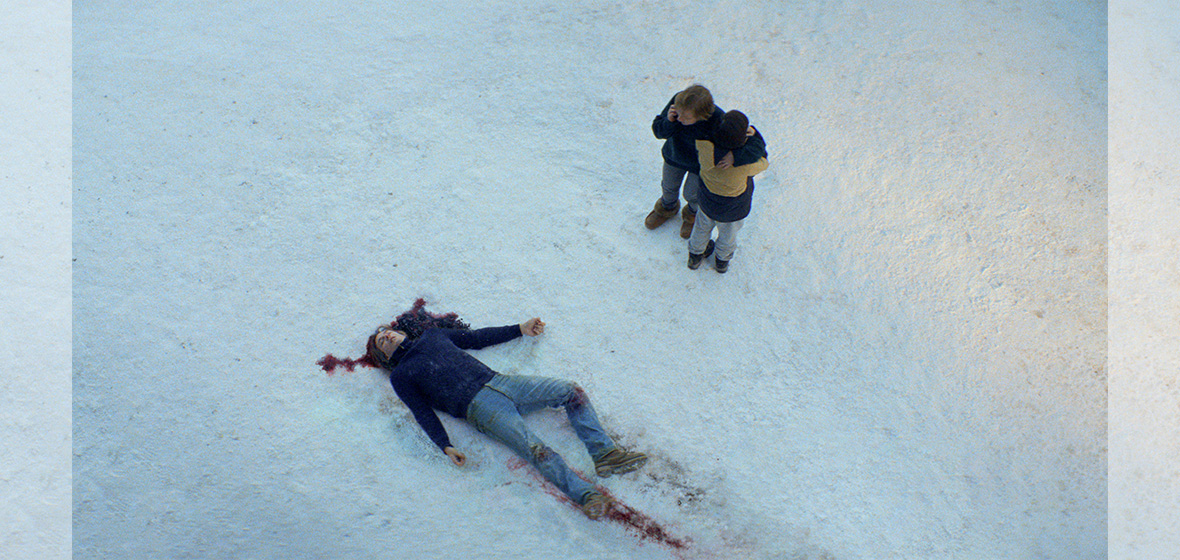French courtroom dramas hit differently. There is something so inherently French about how justice is conducted – like a philosophical debate between two parties, mediated by a judge with their own political bias.
Witnesses are called to be scrutinised, and every word and action is deconstructed like the prosecution and defence are set on a battle of wits. Last year’s Saint Omer (one of LSJ‘s best of 2023) transcribed and dramatised, almost verbatim, the trial of Senegalese immigrant standing accused of the murder of her infant daughter. It was a compelling work, even before we looked into the film’s substance, because the court scenes were transfixing.
It didn’t need the over-dramatised treatment of fiction; it didn’t have to be entertaining, it just was.
Anatomy of a Fall, though, works overtime to deliver the goods. It’s acutely aware of its audience, and that the French’s unique legal process is to analyse our interaction and parasocial relationship with the characters.
Directed by Justine Triet, who also co-wrote it with her partner Arthur Harari, Anatomy of a Fall starts with an interview. Sandra (Sandra Hüller) is being interviewed in her own house about her career as a novelist. The chat ends abruptly when Sandra’s husband, Samuel (Samuel Theis), blasts loud, abrasive music in the attic where he works on renovations. The interviewer leaves, Sandra goes for a rest, and the couple’s blind son, Daniel (Milo Machado Graner), takes his dog for a walk. When he returns, Samuel’s body lies dead in the snow.
In the first third of the story, Anatomy of a Fall is an investigation of the death. First deemed a suicide, there are suspicions Sandra could be involved. She was the only person at home when it happened, and details about their relationship paint a strenuous and potentially toxic marriage.
Sandra is German but lives with her family in Samuel’s tiny mountain hometown. Her French isn’t perfect, so she prefers to speak in English at home, so if something is lost in translation, it’s lost to everybody. Alone in a place she never wanted to be in the first place, Sandra feels the brunt of a community she doesn’t want to connect with. It’s interesting that Triet sees the European dream as a complex reality rarely addressed. Sandra and Samuel perfectly encapsulate elements of their culture and the difficulties in finding harmony on the middle ground.
And this is all explored as soon as the trial starts.
If the film’s first act is a slow burn, it is because the procedural nature of the investigation isn’t that captivating. There are no moral judgments, just assumptions based on out-of-context evidence. When Sandra has to stand in court, Anatomy of a Fall shows its hand. A film that looked like a simple Hitchcockian whodunnit (or more, didtheydoit?) turns into an examination of how we as a society deem the personality profile as worthy of judgment. It’s an idea that Camus explored in The Stranger, so preposterous it breaks the protagonist from his stoicism to accuse society of being unreasonable and absurd.
Triet compares this to our, the filmgoer’s, relationship with the story. Social media does this; we like to over-examine the behaviours of people we don’t know because we believe that the key to a mystery we don’t understand lies in them. Interestingly, the French word for court hearing is “audience” because that’s precisely what Triet does.
Witnesses take the stand and are subjected to a debate about what they perceive as the truth and their own motivations to do so. Evidence is removed from context but presented in a way that seems ironclad. In a particular tremendous moment, an audio clip of an argument between Sandra and Samuel plays in the court. Triet playfully cuts between the courtroom reaction to the audio and the actual scene that happened – letting us know more than what the people in court can see while still keeping the mystery open for us to unpack.
Her point is not whether Sandra murdered her husband or not; the point is that we cannot know by listening to one audio clip recorded days before, or by asking the opinion of snarky psychologists.
Triet does give the trial a conclusion, even though I don’t think she had to. The final climax is an intense series of events revolving around Daniel and a piece of information he once saw as innocuous, but after listening to the hearing, he believes he can turn things around. It’s a great moment because it both supports and justifies the absurdity of the investigation. The conclusion could not have been reached without the hearing, yet it comes not from psychological scrutiny but from actual concrete evidence.
Hüller plays Sandra with unsettling detachment. It’s not an overreaction to say this is a thunderous performance. Every little revelation about her character is a surprise but also somehow fits her like a glove. Hüller, who you may remember from Maren Ade’s tremendous Toni Erdmann, has a strength of character that is strangely disconcerting. Her eyes pierce, but it’s always unsure if she’s quietly judging you. And when she is irate, she’s announcing the end of the world. I haven’t remembered a performance as intense as this since Isabelle Huppert in The Piano Teacher.
The end is a bittersweet moment. After a lengthy (the film stretches more than 150 minutes, which, in my opinion, pass quickly but others may not be that accommodating) examination of a relationship breaking apart for the pleasure of both us, the viewers, and the characters present in court, Tiet ends on a quiet emotional note between two characters without explaining what it means. After all, the last thing we get to demand is the meaning of a look, a touch, or an embrace. Some things are just personal.
Verdict: 4 and a half out of 5
Masterfully directed and complemented by one of the best performances of the past decade, Anatomy of a Fall asks some very uncomfortable questions about our failures to communicate and our misguided stubborn eagerness to overanalyse everyone around us.




